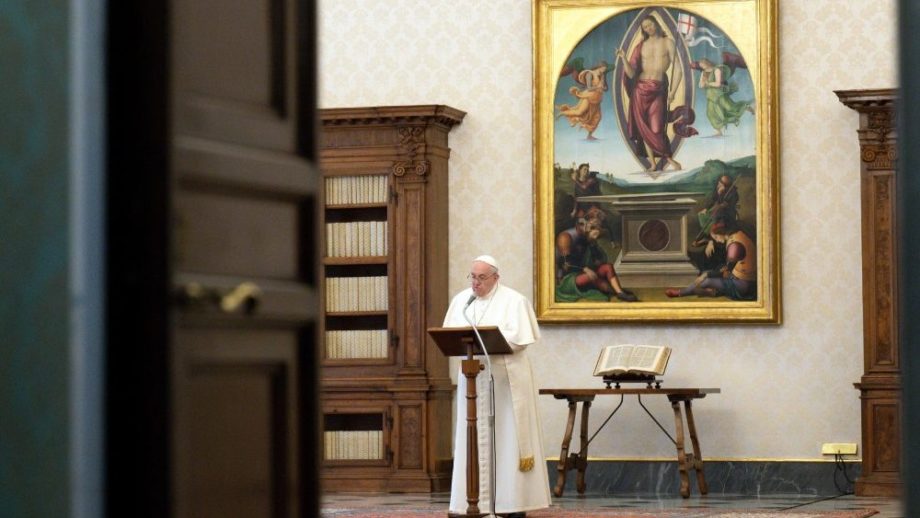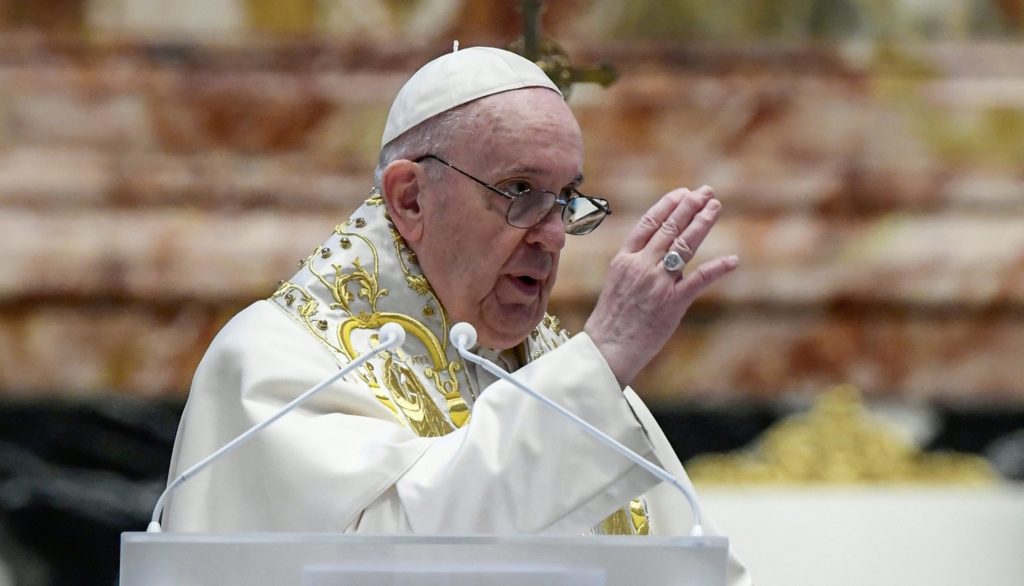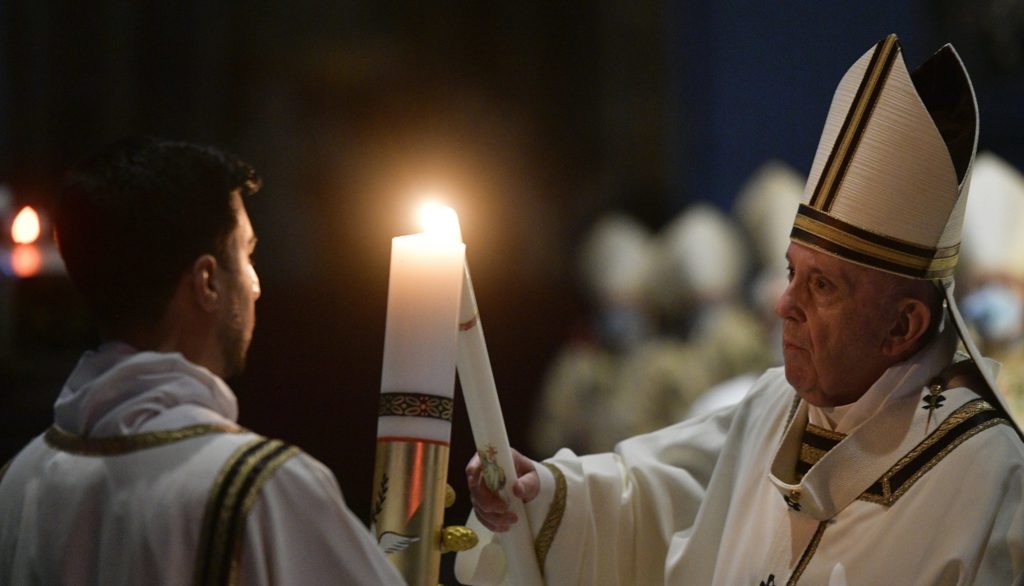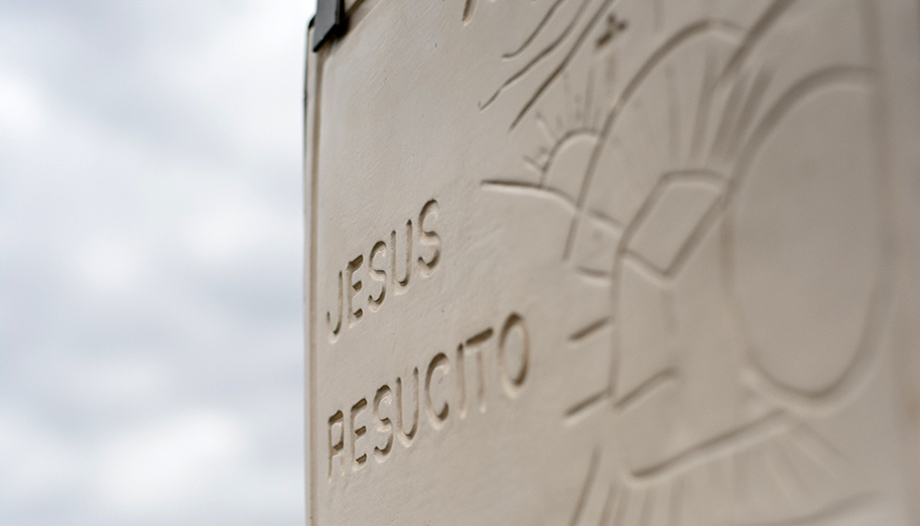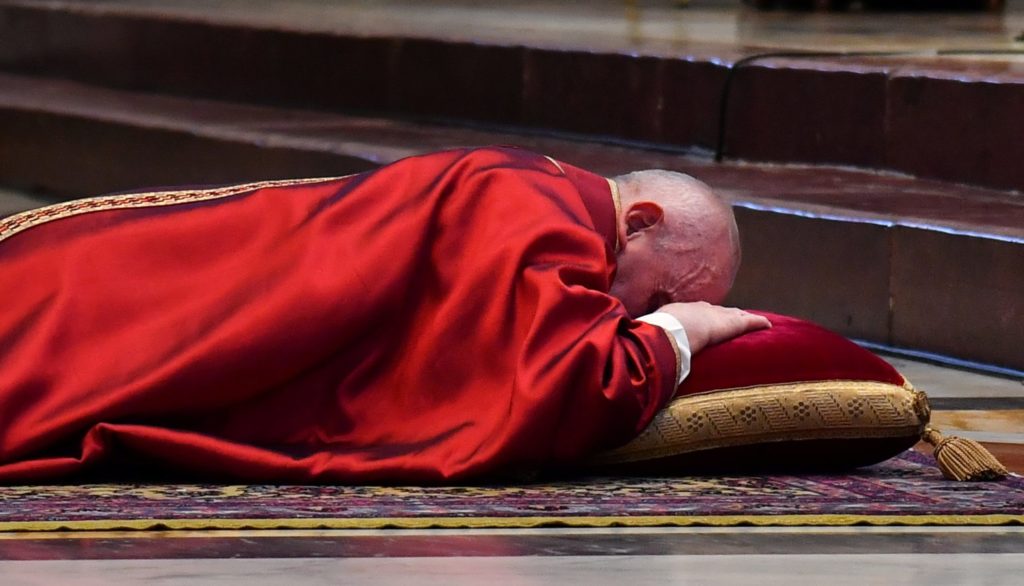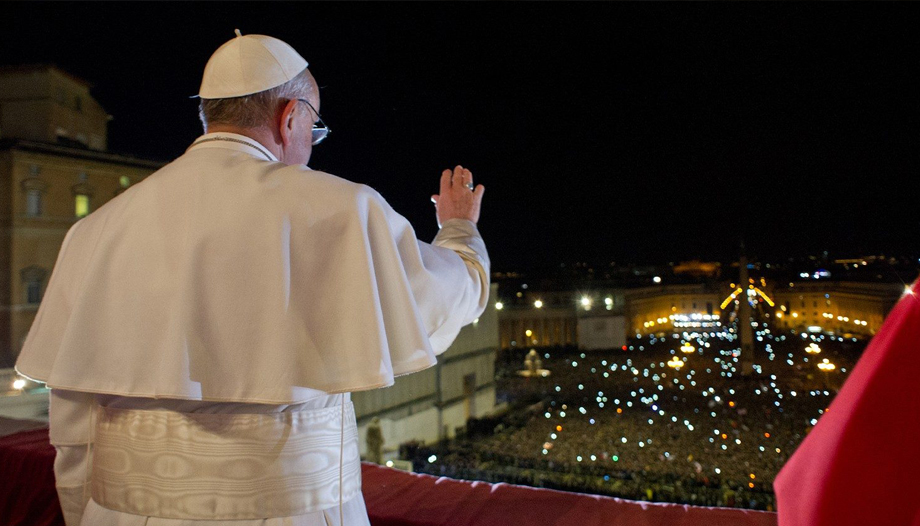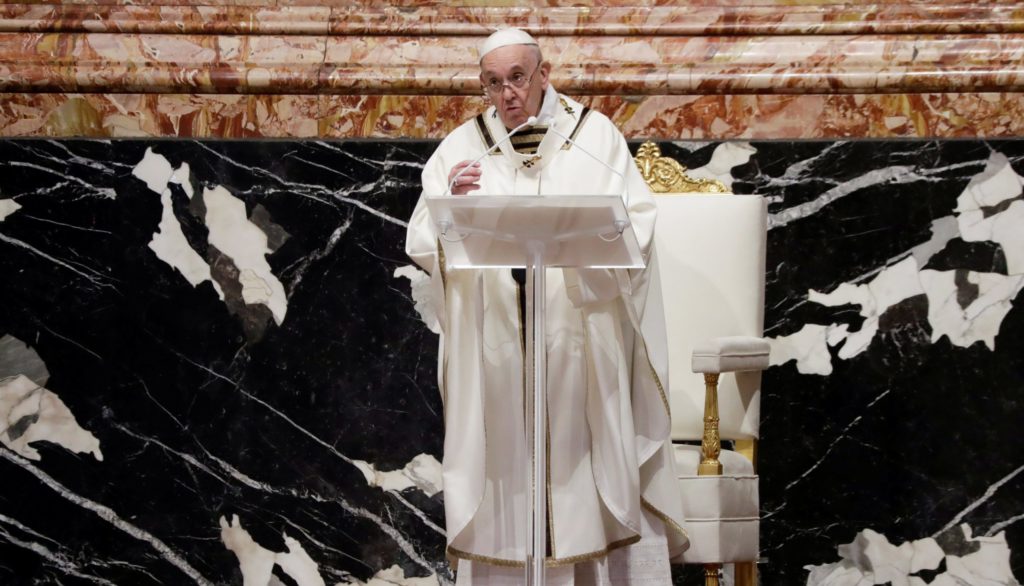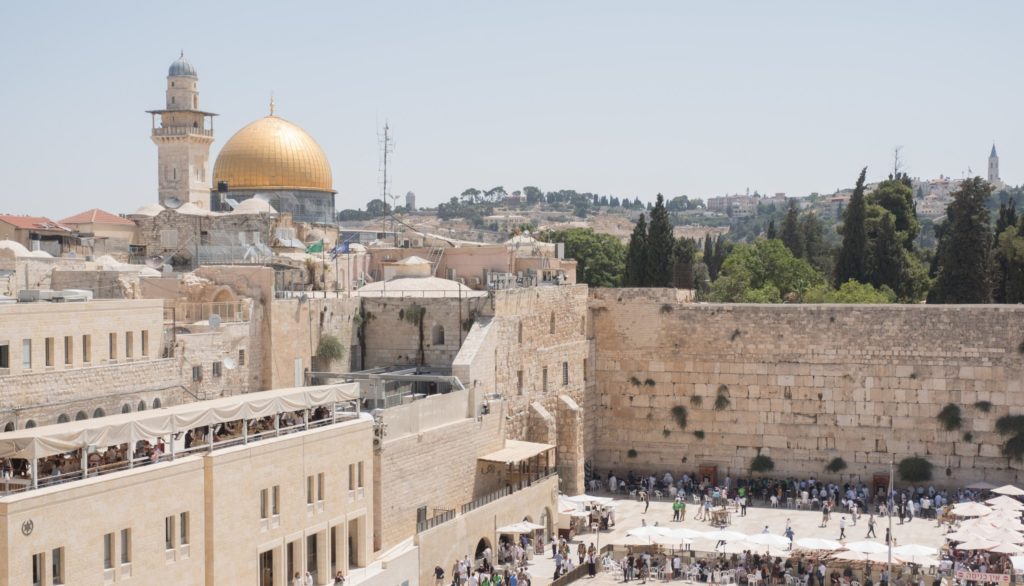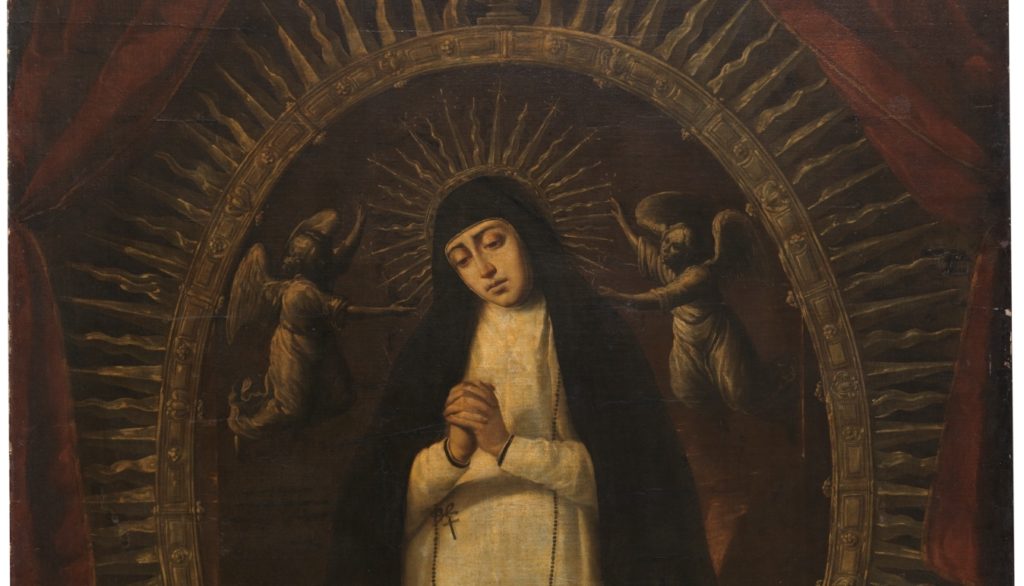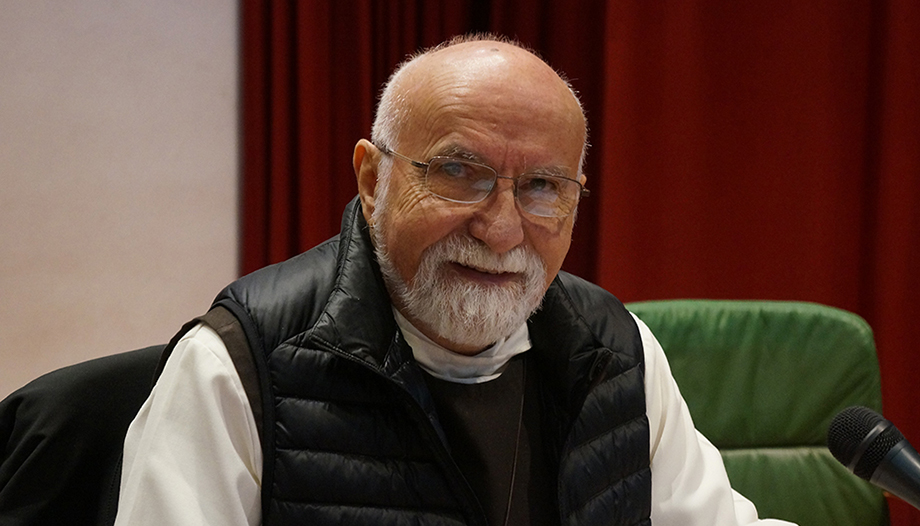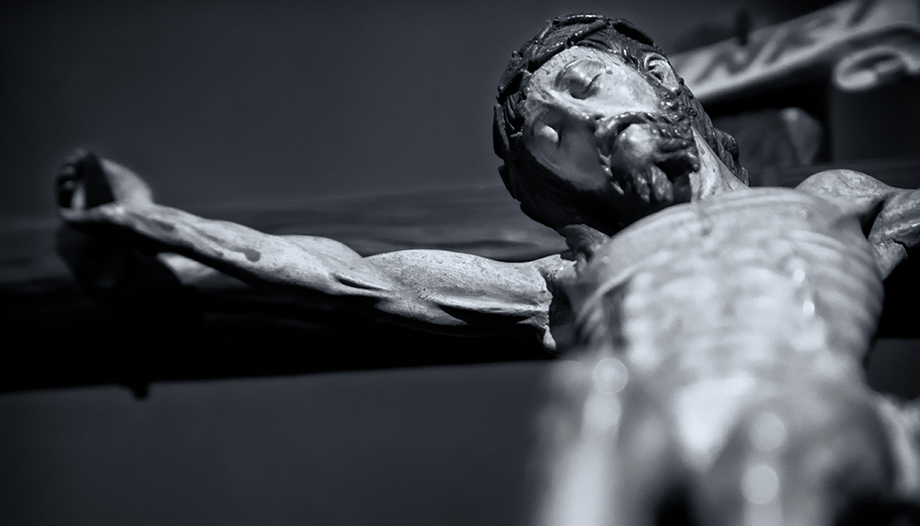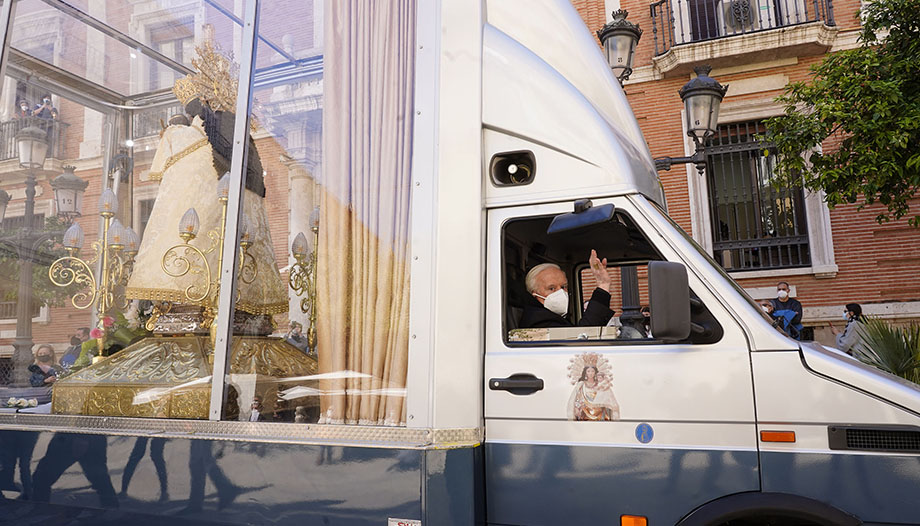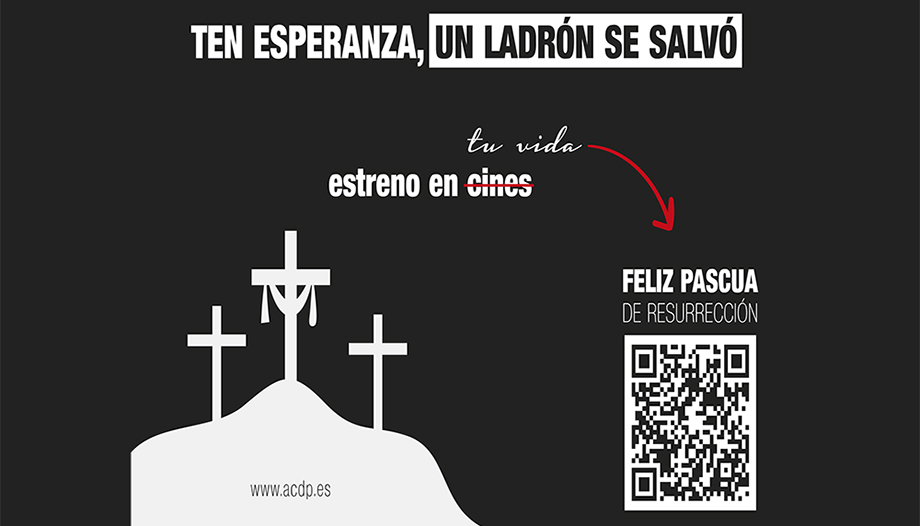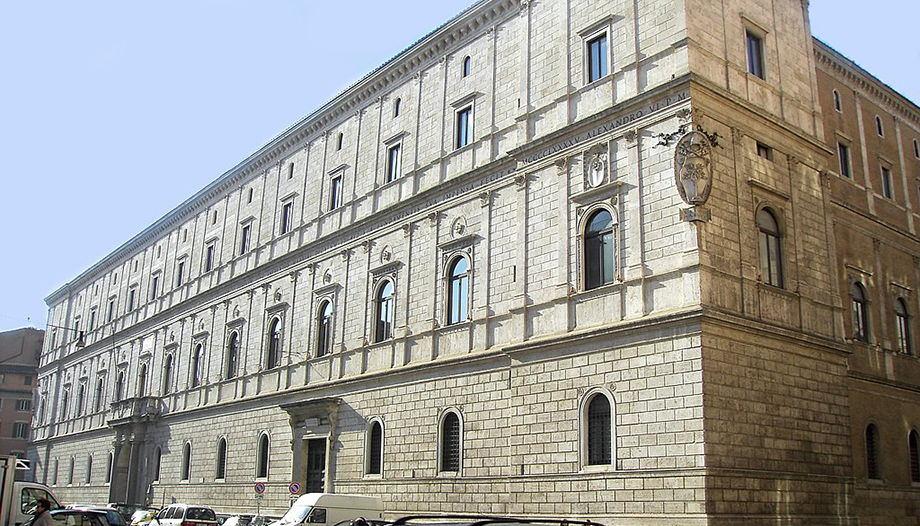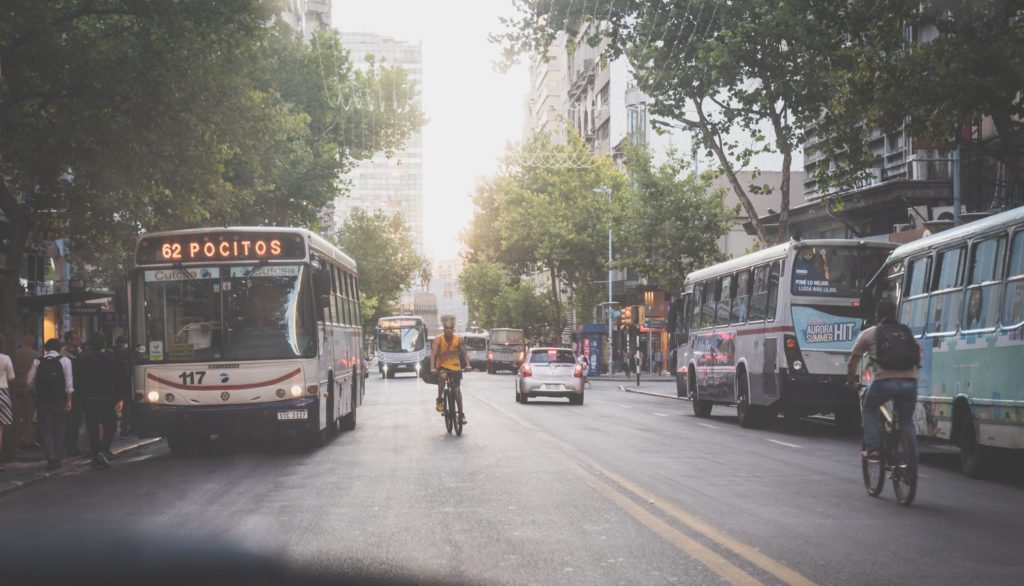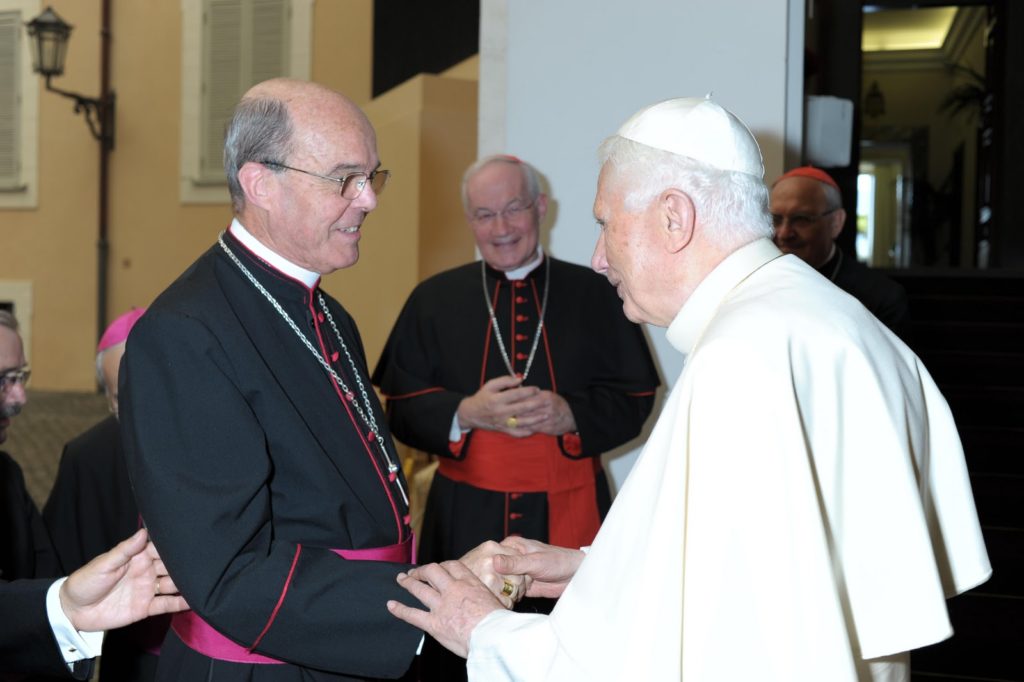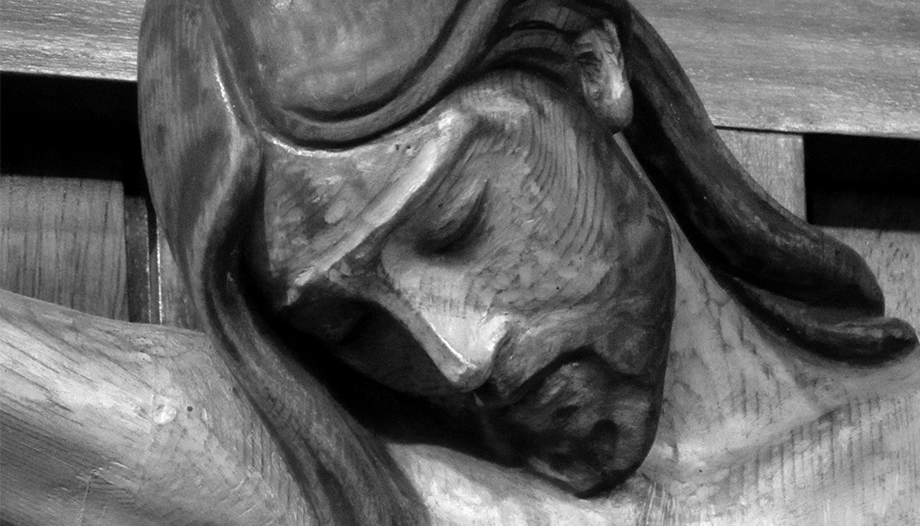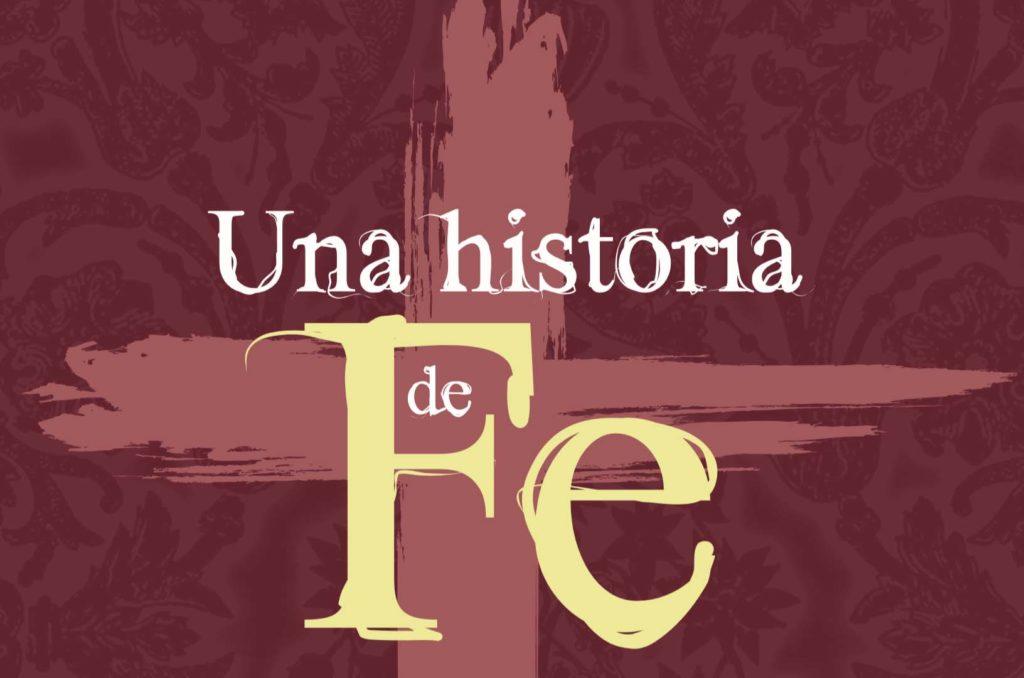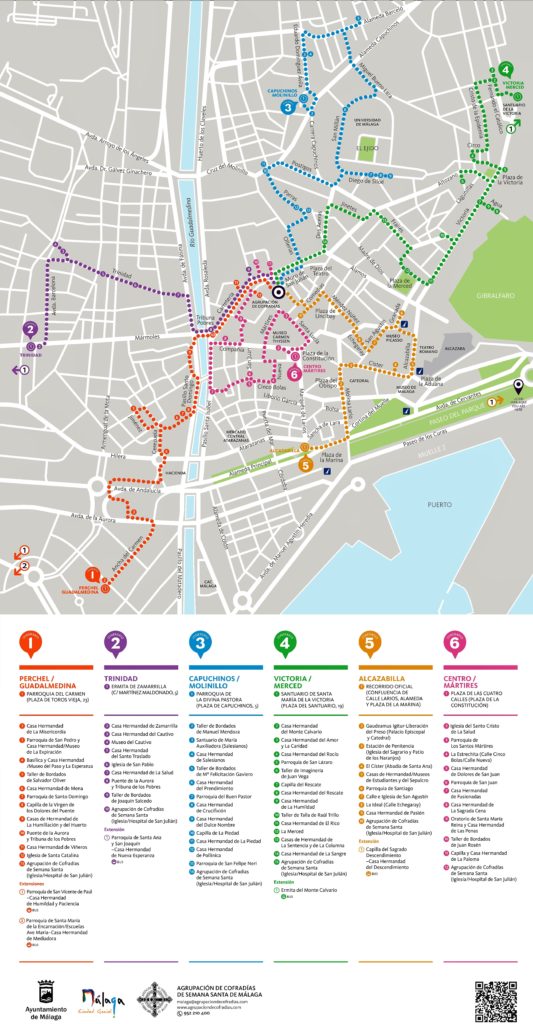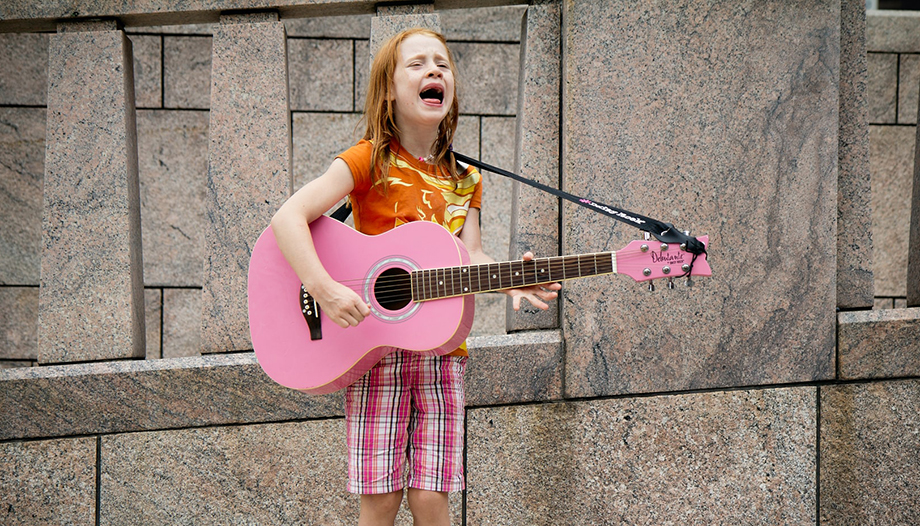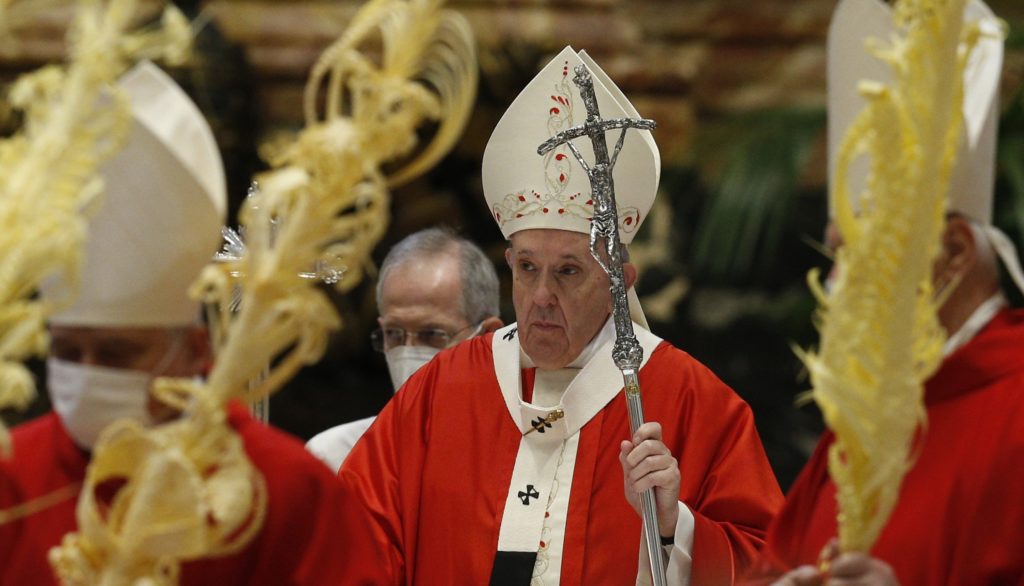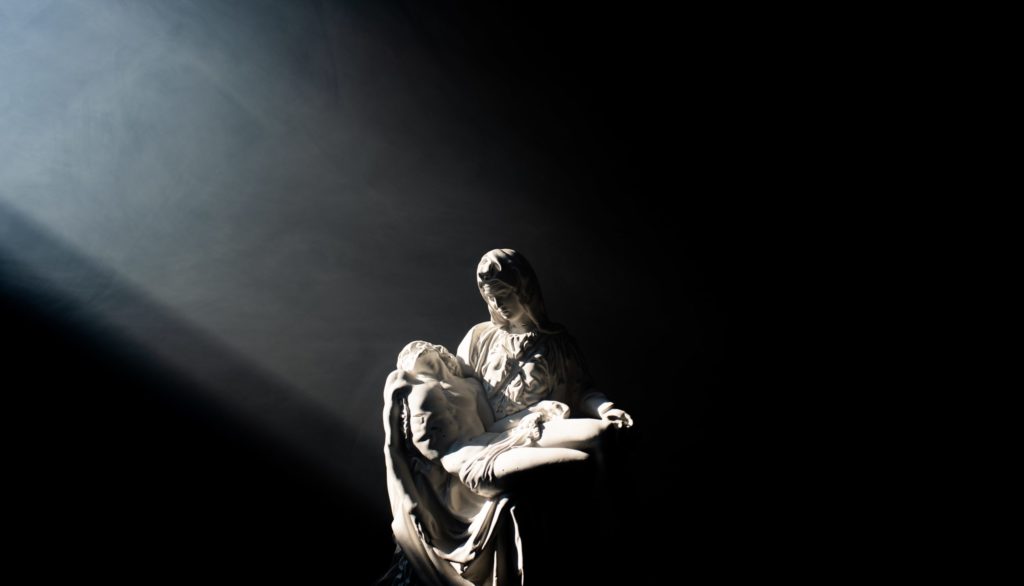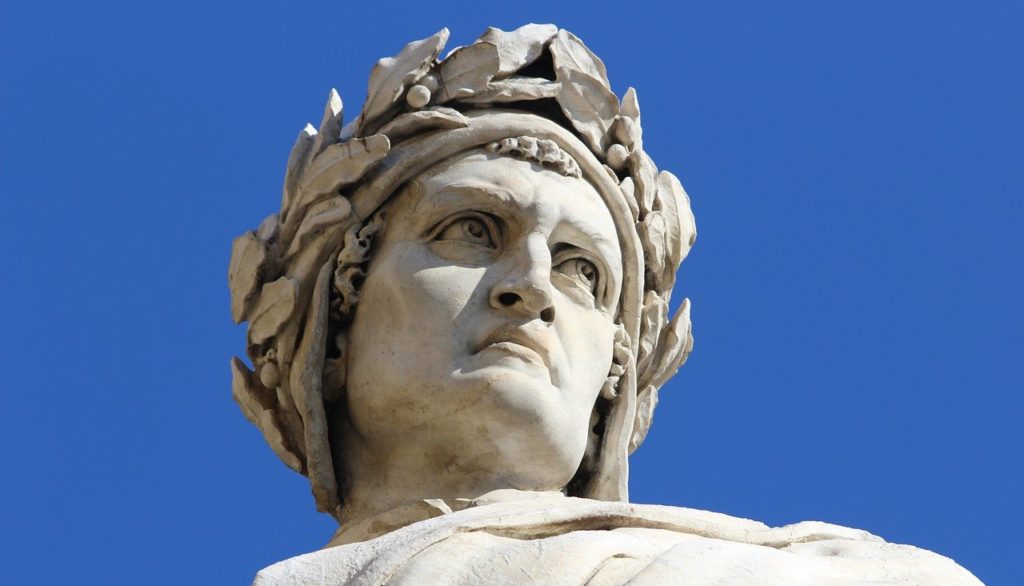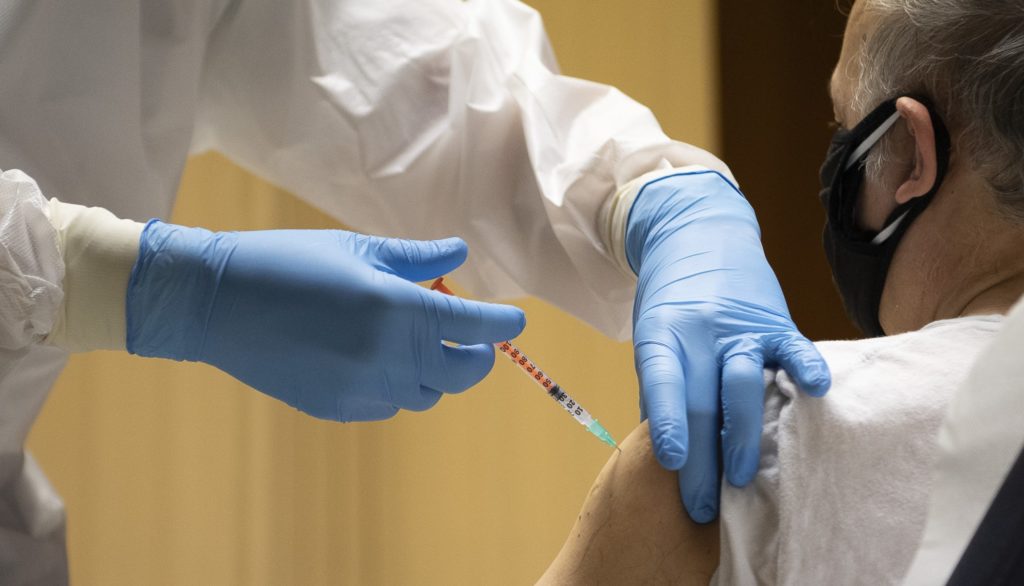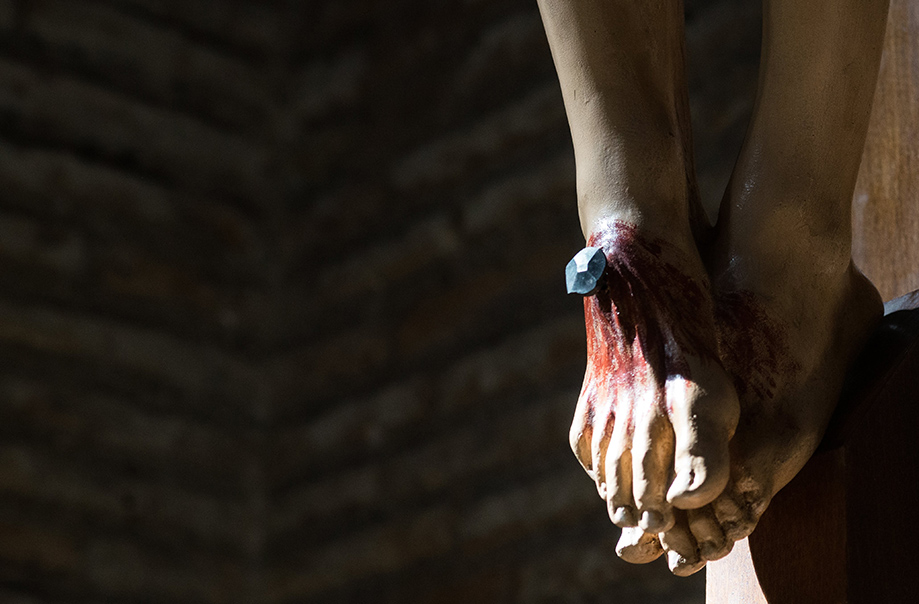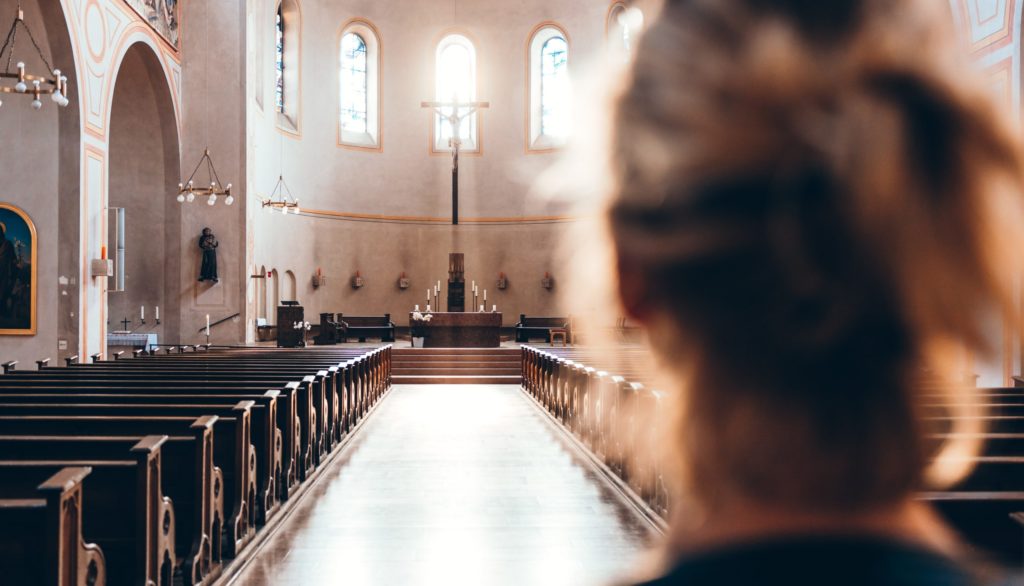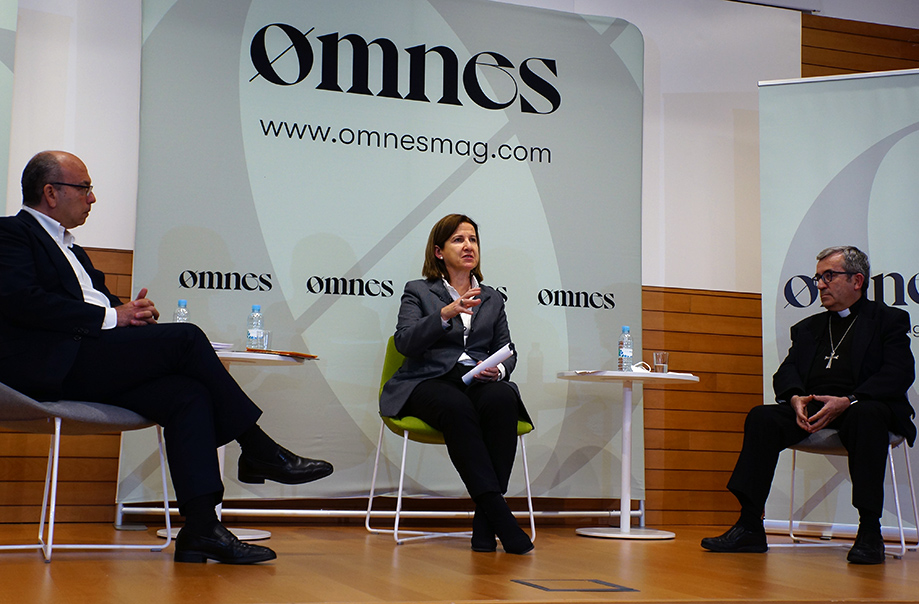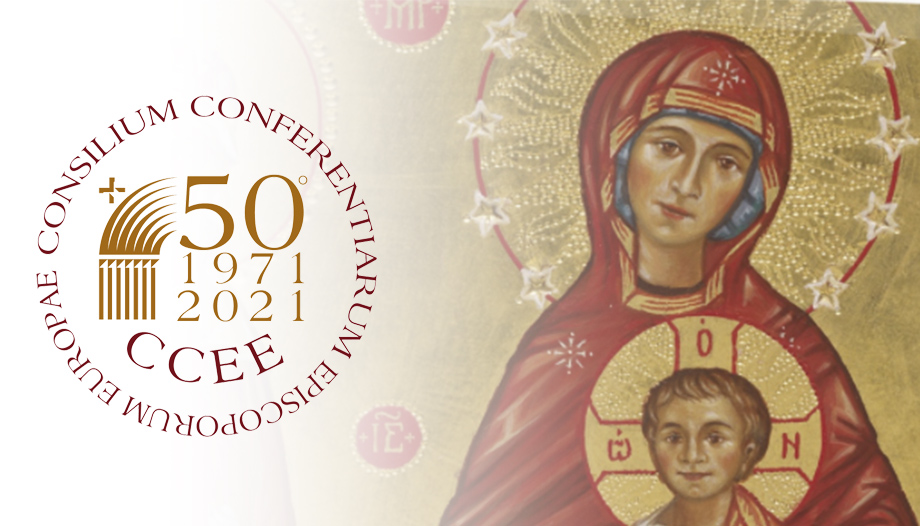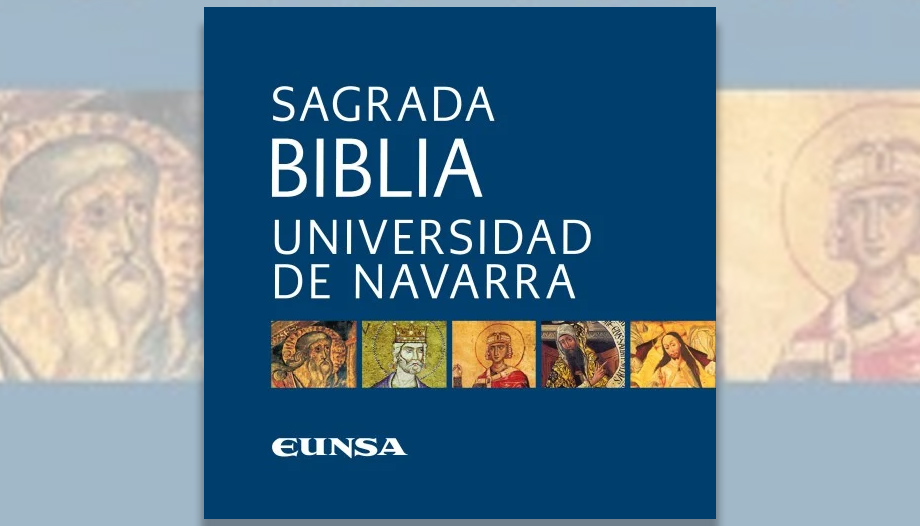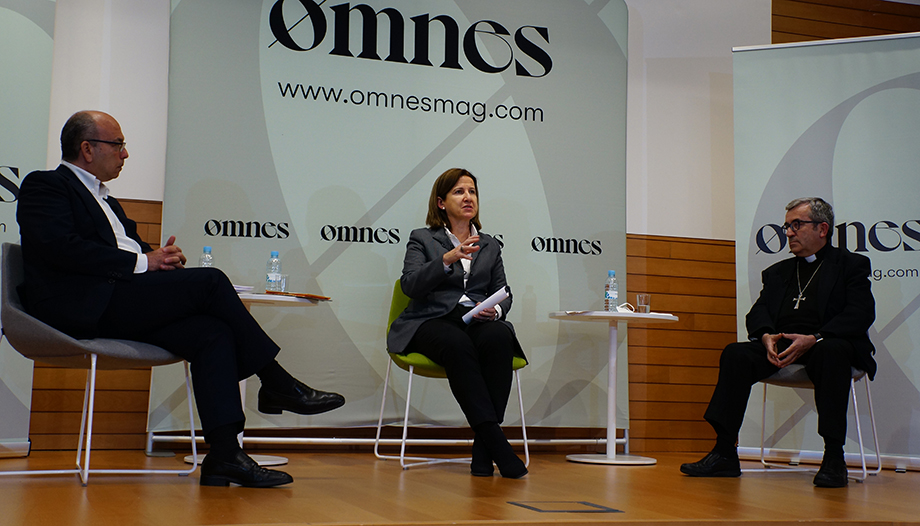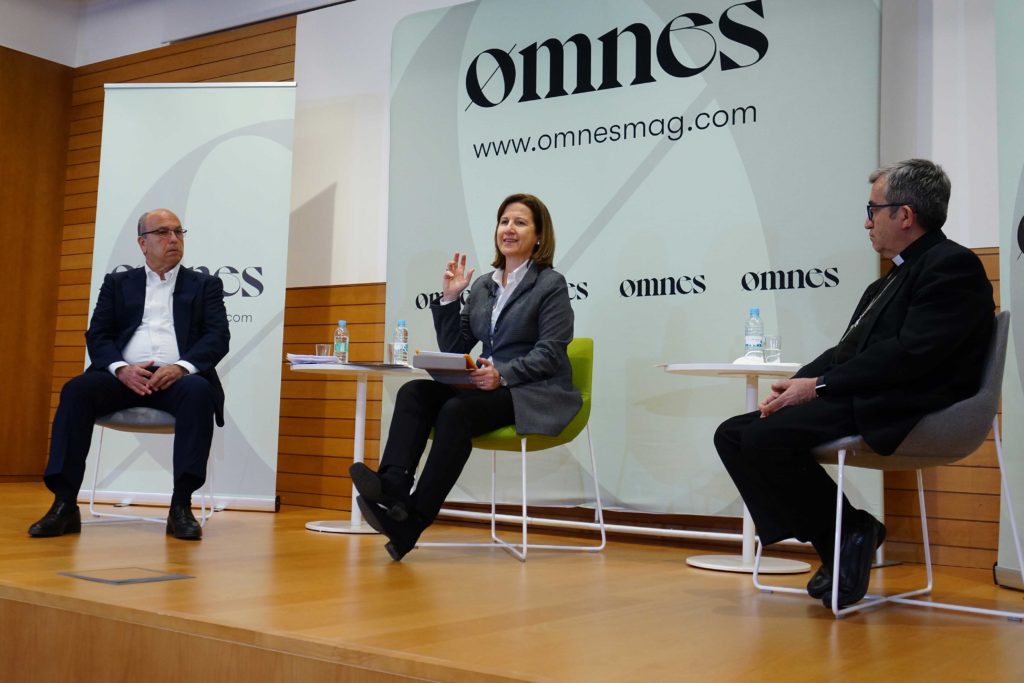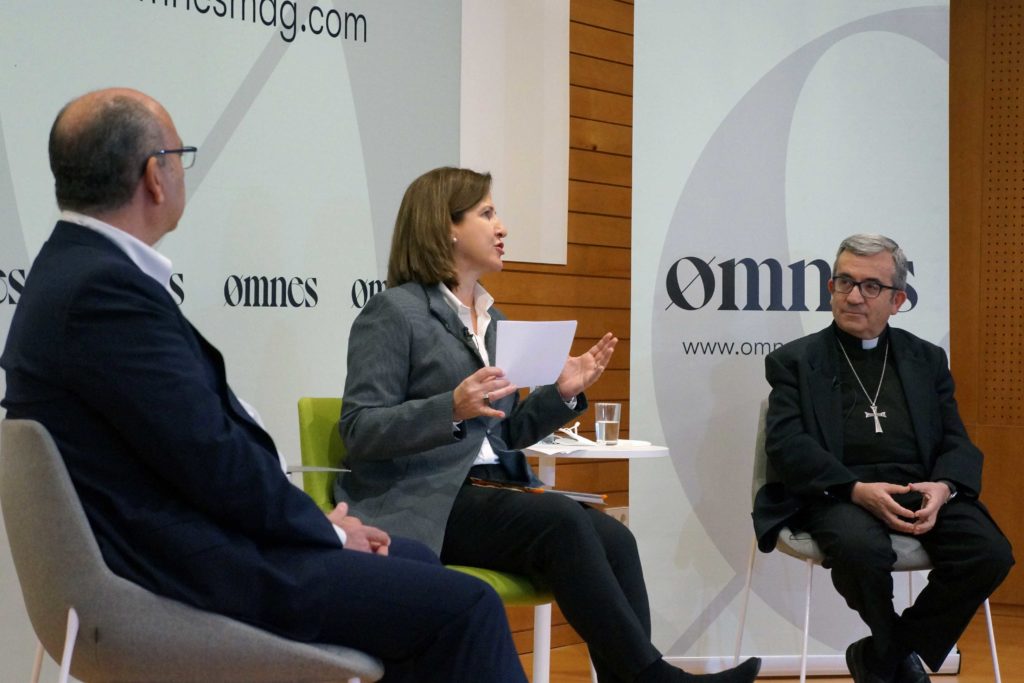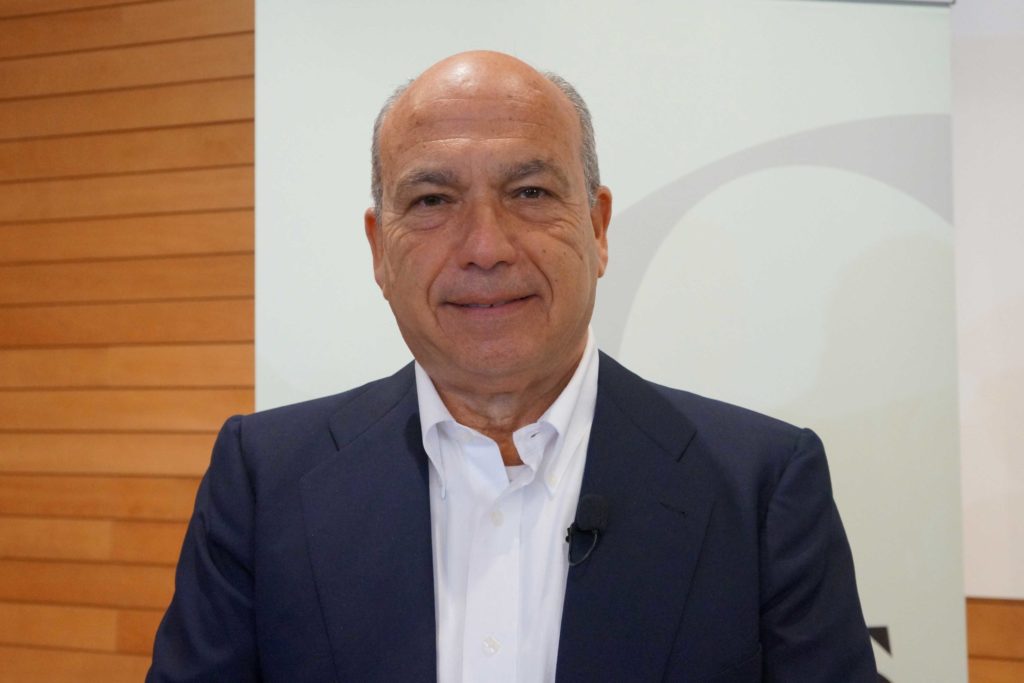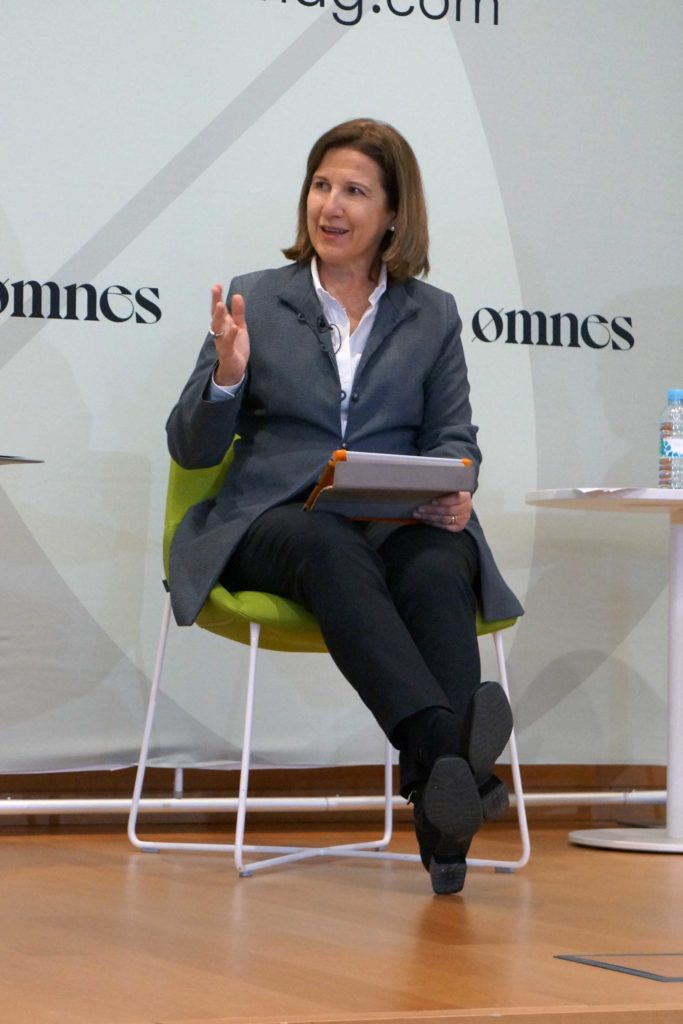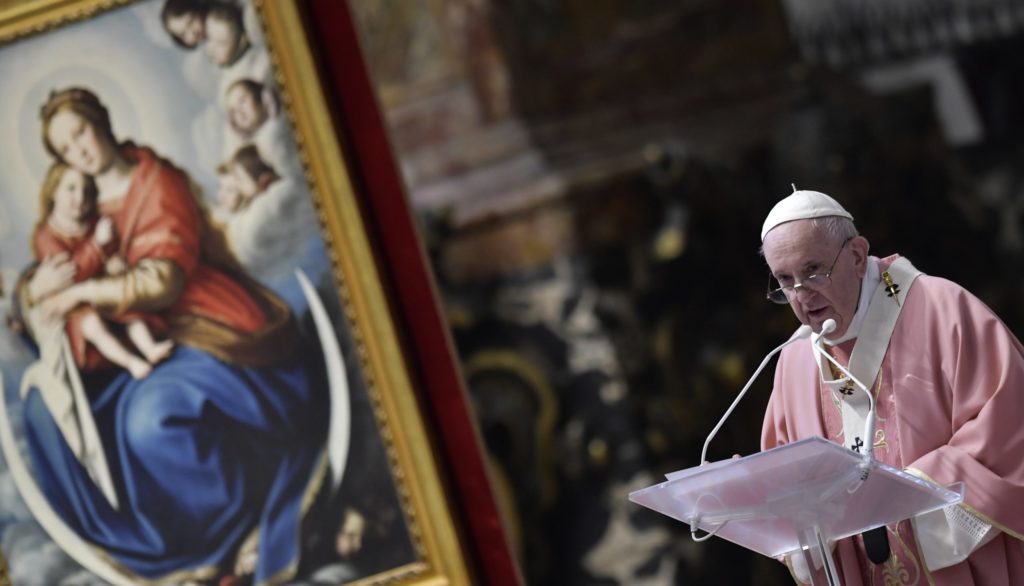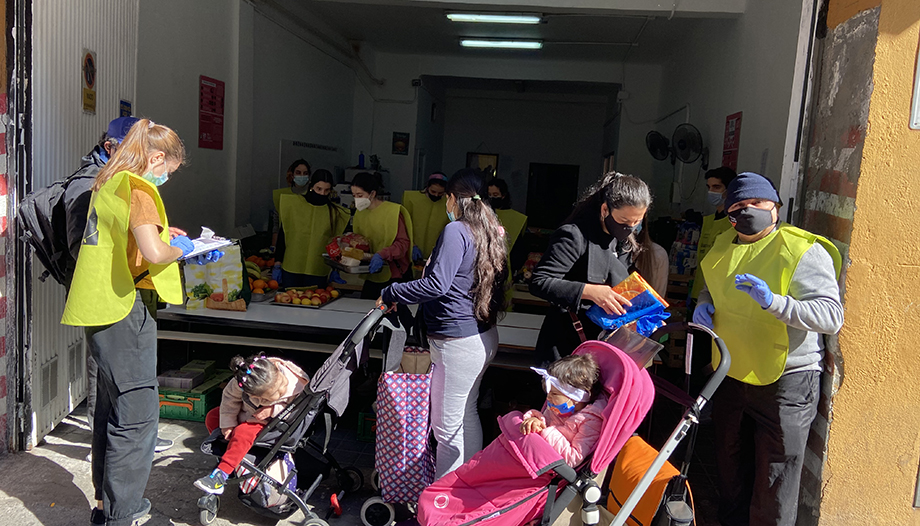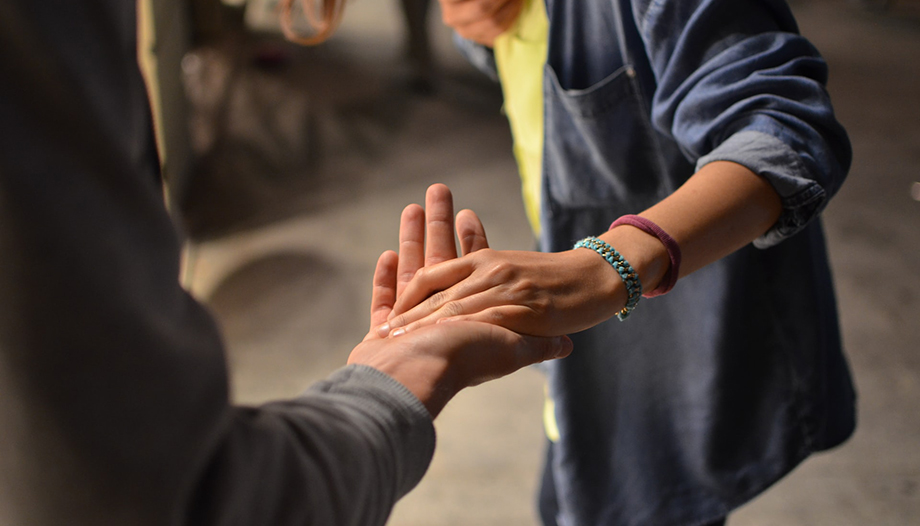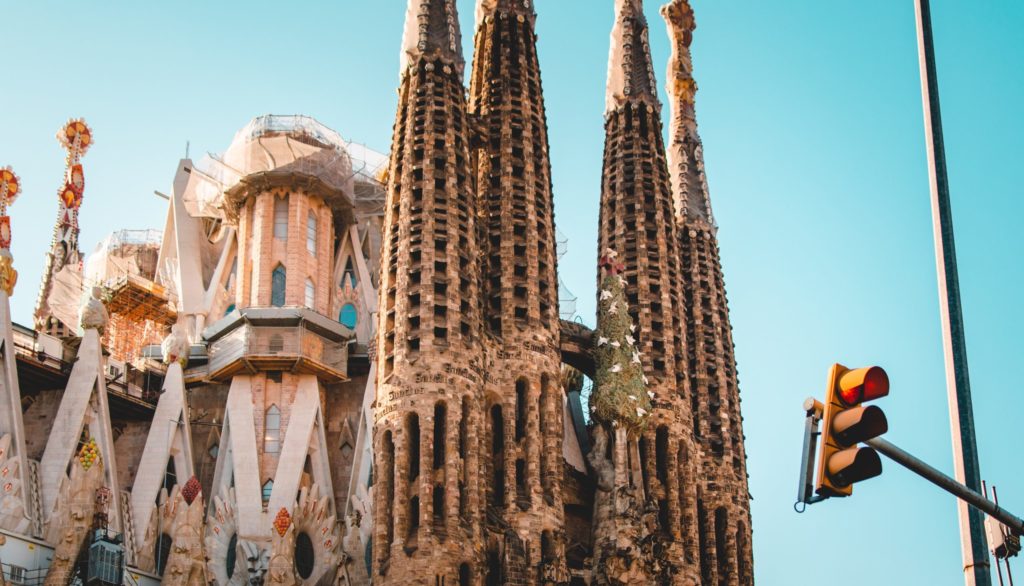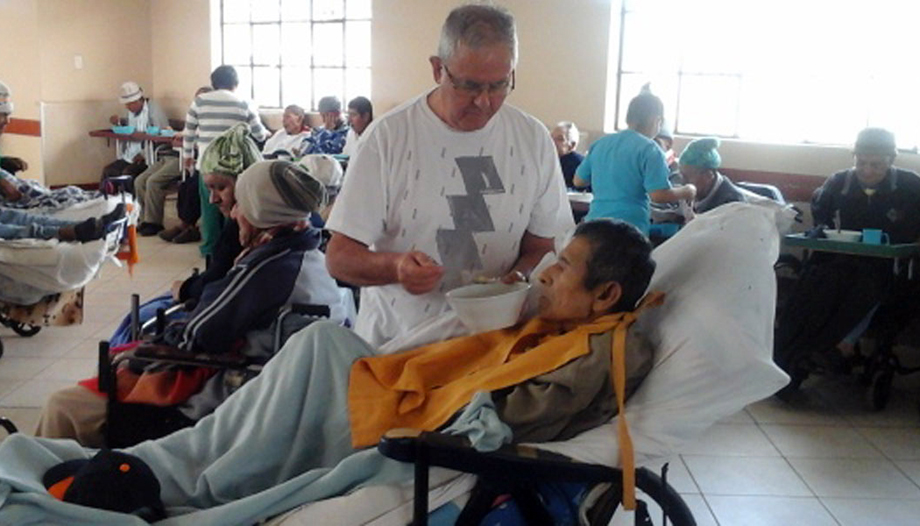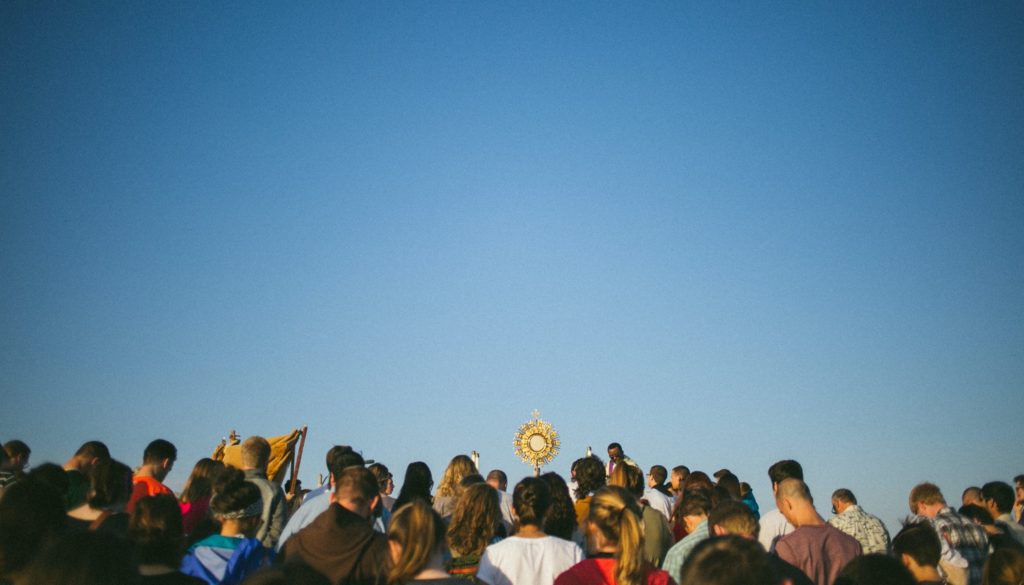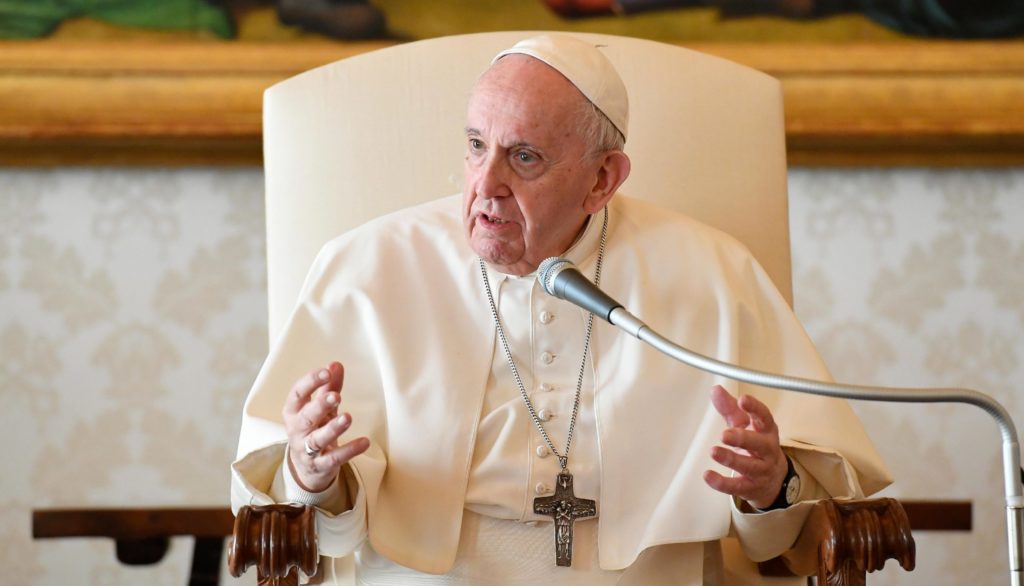Now, hand in hand with Maria, we begin the journey of our Via lucis.
1st Station: Christ lives: He is risen!
If we approach the account of the Evangelist St. Mark, we see how he introduces us, from the everyday, to the great event that we are commemorating today. He says:
"Now after the Sabbath Mary Magdalene, Mary of James, and Salome bought spices to go and embalm Jesus. And very early on the first day of the week, at sunrise, they went to the tomb. And they said to one another, "Who will roll away the stone from the entrance of the tomb? And when they looked, they saw that the stone was rolled away, and that it was very large..." (Mk 16:1-4).
What a simple and important key for the spiritual life: to recognize the power of grace beyond our limits. When the heart leads us to act in the name of Christ, for love of Him, let us not be afraid, His grace precedes us and assists us.
2nd Station: Jesus appears to Mary Magdalene
St. John (20:10-18) relates that Mary stood there, "at the tomb, weeping. Without ceasing her weeping, she went back to the tomb. Then she saw two angels, dressed in white, who asked her, "Woman, why are you weeping? -Because they have taken away my Lord, and I do not know where they have laid him.
When she had said this, she turned back and saw Jesus standing there, but she did not recognize him, and Jesus asked her, "Woman, why are you weeping? whom are you looking for? She thought he was the gardener, and answered him, "Lord, if you have taken him away, tell me where you have put him, and I will go and fetch him myself". Then Jesus called her by nameMary! She came closer and exclaimed: "Master!
Why do we not see you, Lord? You call each one of us by name. I am convinced that it is possible to hear this direct, personal and non-transferable call, but to do so we must "have the reasons of life cleansed of all dross" as Fernando Rielo says in his poem Virgin worldsTo do so, I have to free my dull heart that prevents me from hearing properly, to stop lamenting your absence, to stop crying because I don't know where they have put you, because tears blur my vision... and above all, because you are here!
3rd Station: Jesus appears to women
Matthew (28:8-10) tells how the angels announce to the women that Christ has risen, and they rush out of the tomb and, with fear but with great joy, run to bring the news to the disciples. Jesus met them and greeted them. They fell at his feet and worshiped him.
There are the angels of the tomb of Jerusalem, joining their voice to the angels of the night of Bethlehem. That announcement takes on fullness: from "Rejoice, a Savior has been born to you" (Lk 2:10), today it is "Rejoice, behold the Savior"...; "Why do you seek the living among the dead? He is not here; he is risen" (Lk 24:5). That proclamation of "peace to men of good will" (Lk 2:14), will resound again in the mouth of our risen Lord when he appears to his own and says to them: "Peace be with you" (Jn 20:19).
We are filled with an indescribable joy because the promise has been fulfilled; our God has conquered death, evil has no power over Love. "Death has been swallowed up in victory; where, O death, is your victory? where, O death, is your sting?" (I Cor 15:55).
His resurrection is a prelude to ours; his risen presence that bursts into our time, transcending it, places us in a new way of living with him, gives meaning, new content to existence, it is a clear call for our life, your life and mine, to leave the clutches of death, to go from "death to life". It is the certain hope that this destiny also awaits us.
4th Station: Soldiers guard the tomb of Christ.
But even the most sublime moment of history is beset by evil and lies (Mt 28:11-15). The soldiers allow themselves to be bought; they who could have been, together with the women, the first witnesses of the resurrection, prefer to lie in exchange for a good sum of money and say that his disciples robbed him by night.
How great is human stubbornness! The little faith, the arrogance of which we have already spoken, which prevents us from accepting what we do not know with our small and poor reason: it is difficult for us to accept the power of God and how, if we allow Him, He takes us from death to life, He resurrects us. We want to rule our own history, even though we are often not even aware of it. But power belongs to God alone. His sign is the power over life and death. Ours is dependence, creatureliness. He can give life to Himself; He alone gives it to us.
In this context I seem to intuit the meaning of a proverb by Fernando Rielo: "Every morning we wake up in resurrection / for death. / If you understand it... / you will not come out of your astonishment".
The great temptation of the human being is the autonomynot to accept total dependence on Him; therefore, the clear response of the saints is the consecration. To consecrate oneself is to plunge oneself totally into dependence on "another", definitively renouncing the autonomy that seduces us so much (Luzbel, Eve, Adam...). Here is a marvelous combination of death to oneself and resurrection, which is life in Him.
We have to plead for a clean heart and a reason formed by faith to recognize the truth and never give in to deception, to manipulation for our own interests, in short, to a false autonomy.
5th Station: Peter and John contemplate the empty sepulcher
A story that I find especially tender is when Peter and John go to the tomb (Jn 20:3-10). It is easy to imagine how the hearts of both would beat and what ideas would pass through their minds. They were both running together, but John ran ahead faster than Peter, and reached the tomb first. He stooped down and saw the bandages on the ground; but he did not go in. When Peter came, they went in, and saw, and believed.
Many explanations can be given for this episode; to me it is representative of the virtue of honor. The immense shock they feel does not prevent John from recognizing the primacy to whom he has been given, even though Peter, being older than him, has run less and arrived later at the tomb. What a lesson regarding the treatment we owe to each other! In the first place to our superiors, always giving them the honor and consideration that corresponds to them; and also knowing how to attend to each brother and sister in their characteristics, in their times. This way of proceeding does not come from flesh and blood, but from the action of the risen Christ in me.
6th Station: Jesus in the Upper Room shows his wounds to the Apostles
(Lk 24:36-43) "They were talking about these things, when he stood among them and said to them, 'Peace be with you. They were startled and frightened, and thought they saw a spirit. But he said to them, "Why are you troubled, and why do doubts arise in your hearts?
Look at my hands and my feet; it is I myself. Why do you still doubt?" How much tenderness and how much haste of love in those words! Look, touch my wounds... what other proof can I give you of my love, of my remaining at your side at every moment and forever!... what more do you want?
"I will be with you always." (Mt 28:20). I am with you always. I am the resurrection and the life. There is no more room for fear, disappointment, loneliness, uneasiness. My presence is assured; this is the meaning of my appearances, of the way I am showing myself to you, to you: do not be troubled, I am myself!
7th Station: On the road to Emmaus
(Lk 24:13-32)We all remember well the story of those two who were going from Jerusalem to a town called Emmaus, saddened, conversing with each other about all that had happened.
The road to Emmaus is the road of lost hopes, of disappointment, of the feeling of abandonment, the road of those who think it is better to leave everything, to leave the city where the last youthful dreams were buried... How many times are we tempted to walk this road!
And it is there where Christ becomes the one who meets me, not as the Master full of glory who suddenly unveils the mystery of what has happened, but as one more traveler, a companion who walks beside me and step by step tells me the facts, illuminating the truth, the reason for what is happening to finally make himself known in the breaking of the bread, in his Eucharist, and make my eyes open and my heart burn. But for that moment to arrive, we must walk with him, let ourselves be accompanied, believe, wait, and listen... listen a lot...
Once his presence is confirmed, even if he disappears again from our sight, he leaves us in a state of joy and strength enough to return to the city of before, to the city of always, but with the open eyes of renewed, redeemed, resurrected love; he makes us capable of rereading our own history and recovering it in order to bear witness to him, to give him glory.
The experience of this presence of the Risen Christ is the fullness of time open to eternity, in this life. In eternal life it is a beatific state. "They said to one another, "Were not our hearts burning within us when he spoke to us on the way and explained the Scriptures to us?
8th Station: Jesus gives to the apostles the power to forgive sins
(Jn 20:19-23) Jesus said to them again, "Peace be with you. As the Father has sent me, even so I send you. When he had said this, he breathed on them and said to them, "Receive the Holy Spirit. Whose sins you forgive, they are forgiven them; whose sins you retain, they are retained."
One of the greatest gifts of Christianity is forgiveness. Jesus practiced it throughout his life, and it is his first word on the cross: "Father, forgive them". Now he transmits this power to his own, conferring on them the sacramental character of forgiving sins, something that, as we well know, only God can do. That is why, when in the episode of the healing of the paralytic he says to him, "Son, your sins are forgiven", some of the scribes thought among themselves: "How does this man speak like this? He blasphemes; who can forgive sins but God alone" (Mk 2:5-7).
Now, give the apostles this power as an ordinary means of healing, can there be greater compassion? And we all, in some way, participate in this divine trait when we exercise forgiveness. A fruit of Christ's resurrection is to be in me, in us, the total disposition for forgiveness. Any rancor, prejudice, distrust, which stains the figure of my brother must be purified in my heart. This is only possible by the work of grace, and we have sufficient grace for this.
9th Station: Jesus strengthens Thomas's faith
(Jn 20:26-29) This way of forgiving, of proceeding of Jesus Christ, is manifested once again in his appearance to Thomas. Jesus appeared in the midst of the closed doors and said, "Peace be with you. Then he said to Thomas, Reach here your finger and see my hands; bring your hand and put it into my side, and do not be unbelieving but believing. Thomas answered him, My Lord and my God. Jesus said to him, "Because you have seen me, you have believed. Blessed are those who have not seen and yet have believed".
Blessed, yes, because can there be anyone freer and happier than he who has staked everything on Christ, with all his heart and without reservation, truly, and lives with total trust in the Providence of the Father? Those of us who have not yet arrived at this holy and blessed stripping, are still assailed by longing, fear and the shadow of doubt.
Yes, those who believe without seeing are happy.
10th Station: Jesus risen at the lake of Galilee
(Jn 21:1-7)After this, Jesus manifested himself again to the disciples on the shores of the Sea of Tiberias. We remember this episode well. Jesus said to them, "Boys, have you no fish? They said to him, "No." They answered him, "No." He said to them, "Cast out the fish. He said to them, 'Cast the net on the right side of the boat, and you will find some. So they cast it, and could no longer drag it because of the abundance of fish. The disciple whom Jesus loved then said to Peter, "It is the Lord. And Peter put on his garment, for he was naked, and threw himself into the sea".
Fernando Rielo, applying this Gospel passage to vocation, said that vocation requires two elements: that there be some apostles who set out to fish and that Christ be present, as in Tiberias, to direct that fishing. We can be very busy even in the most sacred things, dedicating effort, time, creativity, all our energies; but the blessing and fruitfulness is not subject to our own capacity, ingenuity or professionalism, it comes from knowing that we are sent by Christ, humble instruments of his grace. He who said to St. Peter: "I will make you a fisher of men." The Holy Spirit will send us the Holy Spirit to show us the right way to act at every moment, where we should cast our nets.
11th Station: Jesus confirms Peter in Love
(Jn 21:15-19) "After they had eaten, Jesus said to Simon Peter, Simon of John, do you love me more than these?"
A question that evokes that "Do you see that I make all things new?". The risen Christ restores Peter's love. There is no word of recrimination in him, not even a word of warning for the future, that human "I told you so" with which we throw things in each other's faces, no. God does not act like that. No. God does not act like that. He restores, he elevates, because his justice is severe before the wicked who consciously, arrogantly, opposes him, but infinitely merciful before the weak, the needy. He, who spent his life healing us, also does it now, now risen, restoring with his triple question "Peter, do you love me?", the triple denial that had wounded the heart of poor Peter with the deepest pain. And with the restoration, the passage to another form of love, to the true one, which goes beyond sentiment, affection and good intentions, to the love that -image of divine love- is donation, co-redeeming mission: "Feed my sheep".
12th Station: Jesus entrusts his mission to the apostles
(Mt 28:16-20)And here is the mission: "All power in heaven and on earth has been given to me. Go therefore and make disciples of all nations, baptizing them in the name of the Father and of the Son and of the Holy Spirit, and teaching them to observe all that I have commanded you. And behold, I am with you always, even to the end of the age".
Go and preach what you have seen and heard, what your heart lives, so that all peoples may become my disciples. It is the time of mission, of the apostolic imperative so that the joy of the Gospel may reach every corner of the earth and of the human heart.
We are finalizing our via lucis, culminating in two stations in which we are invited to meditate on the corresponding liturgical feasts: Ascension and Pentecost.
13th Station: Jesus ascends into heaven
(Acts 1:9-11)And when he had said this, he was lifted up before them, and a cloud hid him from their eyes.
14th Station: The coming of the Holy Spirit at Pentecost.
(Acts 2:1-4) "When the day of Pentecost had come, they were all together in one place. Suddenly a sound came from heaven like the rush of a mighty wind [...] and they were all filled with the Holy Spirit".
Until then, let us joyfully travel this path of light that Easter has initiated, taking up these teachings that I have briefly described and so many others that Christ himself will deposit in our hearts as he accompanies us along the path of life.
The authorLourdes Grosso García, M.Id.Director of the Office for the Causes of Saints of the Spanish Bishops' Conference
 Dante's humanism, still current and relevant today
Dante's humanism, still current and relevant today The Eucharist at the center. From Ireland to Ecuador, the devotion always alive.
The Eucharist at the center. From Ireland to Ecuador, the devotion always alive. The eight snapshots of Francis' pontificate
The eight snapshots of Francis' pontificate










